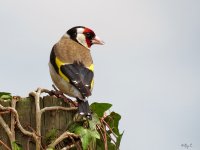I found RAW too slow for action stuff like birds where you want to shoot in burst but it is fine for things like landscapes. I now shoot in superfine jpeg (which is another CHDK option) it just gives you a little more to play with in post processing I have found.
Totally agree with you on all counts. I would possibly consider using RAW if the subject was fairly settled and I was happy with what I'd captured using superfine jpeg. Purely for squeezing that little bit extra out of the lossless DNG format afterwards if needed.
That said, I've now gotten into the habit of converting jpeg's to lossless TIFF's before getting going on the processing. I get the impression (correct me if I'm wrong) that either method amounts to six of one, half a dozen of the other...





